technology
-
 KAIST Receiving Applications for Intelligent SoC Robot War
KAIST is receiving applications to participate in the 2008 Intelligent SoC Robot War through the annual contest"s homepage at www.socrobotwar.org. Application deadline is May 1.
The annual contest features battles between mechanical robots utilizing System on Chip (SoC) technology. The annual robot competition, which began in 2002, is scheduled for Oct. 15-19 this year at the Indian Hall of Convention & Exhibition Center (COEX) in southern Seoul.
The Intelligent SoC Robot War Contest has two sections, Tank Robot and Taekwon Robot. In the Tank Robot contest, robots in the form of tanks engage in duels with laser beams through visual recognition, wireless communication, and audio recognition. On the other hand, the Taekwon Robot contest is a hand-to-hand fight. The robots had to be capable of defending, recognizing the opponent, and attacking without external control.
Any team consisting of more than two people and under six undergraduate or graduate students are eligible to take part in the competition.
Prior to the contest, preliminary assessments and the final selection will be made between July and September.
2008.04.14 View 16878
KAIST Receiving Applications for Intelligent SoC Robot War
KAIST is receiving applications to participate in the 2008 Intelligent SoC Robot War through the annual contest"s homepage at www.socrobotwar.org. Application deadline is May 1.
The annual contest features battles between mechanical robots utilizing System on Chip (SoC) technology. The annual robot competition, which began in 2002, is scheduled for Oct. 15-19 this year at the Indian Hall of Convention & Exhibition Center (COEX) in southern Seoul.
The Intelligent SoC Robot War Contest has two sections, Tank Robot and Taekwon Robot. In the Tank Robot contest, robots in the form of tanks engage in duels with laser beams through visual recognition, wireless communication, and audio recognition. On the other hand, the Taekwon Robot contest is a hand-to-hand fight. The robots had to be capable of defending, recognizing the opponent, and attacking without external control.
Any team consisting of more than two people and under six undergraduate or graduate students are eligible to take part in the competition.
Prior to the contest, preliminary assessments and the final selection will be made between July and September.
2008.04.14 View 16878 -
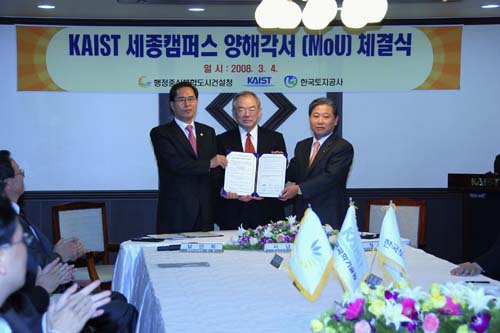 KAIST to Build Branch Campus in New Administrative City
KAIST signed a memorandum of understanding (MOU) with the Multifunctional Administrative City Construction Agency and the Korea Land Corporation on March 4 to build a branch campus in the city now under construction to house many government organizations to be relocated from Seoul.
The MOU calls for building a well-facilitated KAIST campus on 310,000 square meters of land within the planned city, about 30 kilometers west of Daejeon. The multifunctional city, named Sejong City, is scheduled to be dedicated in 2014.
The MAC now being built in the Yongi-Gongju area of South Chungcheong Province is geographically in the center of South Korea, and many governmental agencies and major public organizations will move in from 2015.
The KAIST campus is envisioned to be home to a newly established College of Strategy and Policy, a Strategy and Policy Research Center, and an Innovative Technology Research Center. The College of Medical Science currently based in the Daejeon campus will be relocated to the campus. With a research-oriented hospital and a medical engineering research center, KAIST hopes to become a leading institution in disease treatment and medical engineering technologies.
The new campus is also expected to house new KAIST colleges now in the planning stage which will offer interdisciplinary courses such as the College of IT and Contents and the College of Life Sciences. KAIST also seeks to resolve housing shortage problems by building an in-campus village designed to provide international living environment for professors and students on the planned campus
2008.03.18 View 18439
KAIST to Build Branch Campus in New Administrative City
KAIST signed a memorandum of understanding (MOU) with the Multifunctional Administrative City Construction Agency and the Korea Land Corporation on March 4 to build a branch campus in the city now under construction to house many government organizations to be relocated from Seoul.
The MOU calls for building a well-facilitated KAIST campus on 310,000 square meters of land within the planned city, about 30 kilometers west of Daejeon. The multifunctional city, named Sejong City, is scheduled to be dedicated in 2014.
The MAC now being built in the Yongi-Gongju area of South Chungcheong Province is geographically in the center of South Korea, and many governmental agencies and major public organizations will move in from 2015.
The KAIST campus is envisioned to be home to a newly established College of Strategy and Policy, a Strategy and Policy Research Center, and an Innovative Technology Research Center. The College of Medical Science currently based in the Daejeon campus will be relocated to the campus. With a research-oriented hospital and a medical engineering research center, KAIST hopes to become a leading institution in disease treatment and medical engineering technologies.
The new campus is also expected to house new KAIST colleges now in the planning stage which will offer interdisciplinary courses such as the College of IT and Contents and the College of Life Sciences. KAIST also seeks to resolve housing shortage problems by building an in-campus village designed to provide international living environment for professors and students on the planned campus
2008.03.18 View 18439 -
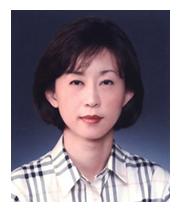 Prof. Lee Listed on Marquis Who's Who
Professor Lee Ji-hyun of the Graduate School of Culture Technology at KAIST was registered to Marquis Who"s Who, known as one of the world"s three leading biographical dictionaries.
Prof. Lee"s biography was published in the 25th anniversary edition of "Marquis Who"s Who in the World 2008."
Lee"s research interests are the color and culture, computer-supported collaborative design, creative design, evolutionary systems in design, formal models of design process, representation and reasoning in design and visualization for design information.
Lee has published about 30 papers in science journals and for scholastic conferences. She is also a participating professor at KAIST Institute for Entertainment Engineering. Before joining KAIST in 2007, she was an assistant professor at the Department of Digital Media Design and Graduate School of Computational Design, the National Yunlin University of Science & Technology (NYUST) in Taiwan starting from 2002.
She received her Ph.D. from the School of Architecture (Computational Design) at Carnegie Mellon University in 2002. She graduated from the Department of Housing & Interior Design at Yonsei University in Seoul in 1991 and received her M.S. from the same university in 1993.
2008.02.14 View 20015
Prof. Lee Listed on Marquis Who's Who
Professor Lee Ji-hyun of the Graduate School of Culture Technology at KAIST was registered to Marquis Who"s Who, known as one of the world"s three leading biographical dictionaries.
Prof. Lee"s biography was published in the 25th anniversary edition of "Marquis Who"s Who in the World 2008."
Lee"s research interests are the color and culture, computer-supported collaborative design, creative design, evolutionary systems in design, formal models of design process, representation and reasoning in design and visualization for design information.
Lee has published about 30 papers in science journals and for scholastic conferences. She is also a participating professor at KAIST Institute for Entertainment Engineering. Before joining KAIST in 2007, she was an assistant professor at the Department of Digital Media Design and Graduate School of Computational Design, the National Yunlin University of Science & Technology (NYUST) in Taiwan starting from 2002.
She received her Ph.D. from the School of Architecture (Computational Design) at Carnegie Mellon University in 2002. She graduated from the Department of Housing & Interior Design at Yonsei University in Seoul in 1991 and received her M.S. from the same university in 1993.
2008.02.14 View 20015 -
 Intelligent SoC Robot War 2007 Has Finale
Kyung Hee University’s “Sandi2007” and “Triple K” of Korea University of Technology and Education and Chungbuk National University were victorious in the Tank Robot category and the Taekwon Robot categories of the 6th Robot War Contest hosted by Korea Advanced Institute of Science and Technology (KAIST).
Boldly entitled “07 Intelligent SoC Robot War”, KAIST hosted its 6th Robot War Contest. In this contest, battles between mechanical robots utilizing System on Chip (SoC) technology are fought. The first Robot War contest was held in 2002. Before the actual contest from October 18th to 21st, preliminary assessments and the final selection was administered in August.
The Intelligent SoC Robot War Contest has two sections called Tank Robot and Taekwon Robot. The Tank Robot contest has robots in the form of tanks duel with laser beams through visual recognition, wireless communication, and audio recognition. On the other hand, the Taekwon Robot contest is a hand-to-hand fight. The robots had to be capable of defending, recognizing the opponent, and attacking without external control.
The 15 teams of the Tank Robot section and the 10 teams of the Taekwon Robot section that passed through the preliminary selections participated in the final battles for 3 days starting on October 18th. The Tank Robot category winner “Sandi2007” showed great ability in visual sensing and the Taekwon Robot category winner “Triple K” had effective arm and leg combinations that eventually led the team to victory.
Kyung Hee University’s “Sandi2007” received 2 million Korean Won as the grand prize along with a special recognition from the Prime Minister, while “Triple K” received 1 million Korean Won with a special recognition from the Secretary of the Ministry of Commerce, Industry and Energy (MOCIE).
The Intelligent SoC Robot War contest was part of the 2007 International Robot Contest (IRC 2007) which was organized by the Center for Robot Industry Promotion (CRIP) and held at Convention & Exhibition Center (COEX) Indian Hall. The individual contests included 8 competitions: Grand Challenge, Robotpiad, Humanoid Robot Contest, Robofest, Intelligent SoC Robot War, FIRA Challenge Cup, Robot Festival, and URC Robot Contest.By KAIST Herald on November, 2007
2007.12.21 View 17845
Intelligent SoC Robot War 2007 Has Finale
Kyung Hee University’s “Sandi2007” and “Triple K” of Korea University of Technology and Education and Chungbuk National University were victorious in the Tank Robot category and the Taekwon Robot categories of the 6th Robot War Contest hosted by Korea Advanced Institute of Science and Technology (KAIST).
Boldly entitled “07 Intelligent SoC Robot War”, KAIST hosted its 6th Robot War Contest. In this contest, battles between mechanical robots utilizing System on Chip (SoC) technology are fought. The first Robot War contest was held in 2002. Before the actual contest from October 18th to 21st, preliminary assessments and the final selection was administered in August.
The Intelligent SoC Robot War Contest has two sections called Tank Robot and Taekwon Robot. The Tank Robot contest has robots in the form of tanks duel with laser beams through visual recognition, wireless communication, and audio recognition. On the other hand, the Taekwon Robot contest is a hand-to-hand fight. The robots had to be capable of defending, recognizing the opponent, and attacking without external control.
The 15 teams of the Tank Robot section and the 10 teams of the Taekwon Robot section that passed through the preliminary selections participated in the final battles for 3 days starting on October 18th. The Tank Robot category winner “Sandi2007” showed great ability in visual sensing and the Taekwon Robot category winner “Triple K” had effective arm and leg combinations that eventually led the team to victory.
Kyung Hee University’s “Sandi2007” received 2 million Korean Won as the grand prize along with a special recognition from the Prime Minister, while “Triple K” received 1 million Korean Won with a special recognition from the Secretary of the Ministry of Commerce, Industry and Energy (MOCIE).
The Intelligent SoC Robot War contest was part of the 2007 International Robot Contest (IRC 2007) which was organized by the Center for Robot Industry Promotion (CRIP) and held at Convention & Exhibition Center (COEX) Indian Hall. The individual contests included 8 competitions: Grand Challenge, Robotpiad, Humanoid Robot Contest, Robofest, Intelligent SoC Robot War, FIRA Challenge Cup, Robot Festival, and URC Robot Contest.By KAIST Herald on November, 2007
2007.12.21 View 17845 -
 KAIST Takes Merging Steps with ICU
Plans to begin the merging of Korea Advanced Institute of Science and Technology (KAIST) and Information and Communications University (ICU) have emerged.
ICU board members and Ministry of Information and Communications (MIC) officials held a meeting at Lotte Hotel, Seoul, on November 21st. The two parties agreed upon the merging of KAIST and ICU; and an interim organization to carry out the merging procedures was to be established. In addition, a preliminary road-map was presented during the meeting.
In the event that a company would show a willingness to financially support ICU, the parties agreed to take this path into consideration as well.
Also at this meeting, the resignation of ICU President Huh Unna was accepted by the board members of ICU. President Huh and the executive board have opposed any proposals of unification between the two universities. The president called for an independent ICU in response to MIC’s withdrawal of funding.
On November 27th, ICU Electrical Engineering Professor Hyuck Jae Lee was appointed as ICU president.
The talk of merging the two universities surfaced when the Board of Audit and Inspection concluded that financial support of ICU from the government was illegal as ICU was established under the private school law exempting the institution from governmental support. When ICU was established in 1997, MIC provided 200 billion Korean Won and has continually supported the university financially with 10 billion Korean Won per year.
Both universities have not released official statements regarding the merging of the respective institutions.
ICU has a student body of about 400 undergraduate students and 600 graduate students. On the other hand, KAIST has a student body of around 3000 undergraduate students, 2000 graduate students, and 2000 doctorate students. Both institutions are located in Daejeon, Korea.
Talk of establishing a single-department IT-convergence university where ICU is currently located surfaced as a possible merging-concept by KAIST.
Organizations and groups opposing the unification of the two technology-related institutions are concerned with details of the merger, such as the personnel management of ICU professors. However, analyses demonstrate that the unification will give KAIST the competitive edge through a larger faculty, student body, and increased facilities.
In July, an in-house poll was conducted at ICU and the results showed that 15 percent of graduate school students and undergraduate students were against the merger while 82.6 percent of undergraduate students and 84.8 percent of graduate students were in favor. 88.6 percent of ICU professors supported the unification of the two universities.By KAIST Herald on December, 2007
2007.12.21 View 15823
KAIST Takes Merging Steps with ICU
Plans to begin the merging of Korea Advanced Institute of Science and Technology (KAIST) and Information and Communications University (ICU) have emerged.
ICU board members and Ministry of Information and Communications (MIC) officials held a meeting at Lotte Hotel, Seoul, on November 21st. The two parties agreed upon the merging of KAIST and ICU; and an interim organization to carry out the merging procedures was to be established. In addition, a preliminary road-map was presented during the meeting.
In the event that a company would show a willingness to financially support ICU, the parties agreed to take this path into consideration as well.
Also at this meeting, the resignation of ICU President Huh Unna was accepted by the board members of ICU. President Huh and the executive board have opposed any proposals of unification between the two universities. The president called for an independent ICU in response to MIC’s withdrawal of funding.
On November 27th, ICU Electrical Engineering Professor Hyuck Jae Lee was appointed as ICU president.
The talk of merging the two universities surfaced when the Board of Audit and Inspection concluded that financial support of ICU from the government was illegal as ICU was established under the private school law exempting the institution from governmental support. When ICU was established in 1997, MIC provided 200 billion Korean Won and has continually supported the university financially with 10 billion Korean Won per year.
Both universities have not released official statements regarding the merging of the respective institutions.
ICU has a student body of about 400 undergraduate students and 600 graduate students. On the other hand, KAIST has a student body of around 3000 undergraduate students, 2000 graduate students, and 2000 doctorate students. Both institutions are located in Daejeon, Korea.
Talk of establishing a single-department IT-convergence university where ICU is currently located surfaced as a possible merging-concept by KAIST.
Organizations and groups opposing the unification of the two technology-related institutions are concerned with details of the merger, such as the personnel management of ICU professors. However, analyses demonstrate that the unification will give KAIST the competitive edge through a larger faculty, student body, and increased facilities.
In July, an in-house poll was conducted at ICU and the results showed that 15 percent of graduate school students and undergraduate students were against the merger while 82.6 percent of undergraduate students and 84.8 percent of graduate students were in favor. 88.6 percent of ICU professors supported the unification of the two universities.By KAIST Herald on December, 2007
2007.12.21 View 15823 -
 S&T Policy Agenda of Major Presidential Candidates
Science and Technology Policy Agenda of Major Presidential Candidates
The KAIST TIMES recently reviewed science and technology policy suggestions made by five major presidential candidates. Below is a summary of the information assembled based on written interviews conducted by The KAIST TIMES, gatherings on science and technology policies, and press conferences.
Chung Dong-young of the United New Democratic Party
The UNDP’s Chung Dong-young presented a vision to join the world’s top seven aerospace leaders in an effort to transform Korea into a science-technology powerhouse.
In order to achieve this goal, he suggested five policy strategies: support research and development of creative, innovative science and technology, ; expand resources for the innovation of science and technology, ; promote academia and business partnerships, ; strengthen infrastructure to innovate scientific and technological fields, ; boost the morale of scientists and engineers, ; and promote the dissemination of scientific culture.
The most noticeable striking part element of his vision is to make add Korea to join the list of the world’s top seven aerospace powerhouses. Chung included the this vision in his 20 key 20 pledges, underscoring his commitment to the aerospace industry. He said that the aerospace industry can produce simultaneous growth of various high-tech industries.
Chung also vowed that he would extensively foster high-value added assembly industry in conjunction with a scheme to nurture parts and material industries.
As detailed action plans to achieve his vision, he cited development of small and medium-sized aircraft carriers and upgrading air control systems as part of the efforts to make Korea as a stronghold of popular aviation of in Northeast Asia. He also revealed plans to embark on a project to explore the Moon and send an unmanned probe there by 2020.
To implement aerospace development plans systematically, he suggested inaugurating the envisioned Korean Aeronautics and Space Administration, modeled after the NASA of the United States and JAXA of Japan.
Lee Myung-bak of the National Grand Party
Presidential candidate Lee pointed out basic sciences and open-source technologies as crucial prerequisites to achieve economic growth. As five implementation strategies to promote the development of these areas, he called for the fostering of more scientific and technological talents; a drastic increase in investment in science and technology; creation of new fusion industries that will serve as future growth engines; promotion of autonomy and creativity; and popularization of science and technology.
He also pledged to carry out two large-scale projects, the creation of “an international scientific-corporate city belt” and the technological development of new renewable energy.
Among them, drawing the largest attention is the creation of an “international scientific-corporate city belt” connecting several technological complexes located in Chungcheong Provinces. The city belt is envisioned to connect the Daedok Innopolis in Daejeon, the proposed Bio-Health Science Technopolis in Osong, Sceintific Industrial Complex in Ochang, and the new administrative town under construction in Yeongi-Gongju. At a lecture hosted by the Science and Technology Forum and the Korean Engineers Club, Lee said that the project has been motivated by the idea of locating research and corporate complexes in close proximity to bring about maximum efficiency of commercializing research results.
Kwon Young-ghil of the Democratic Labor Party
In a written interview with The KAIST TIMES, Kwon summed up his vision for science and technology as shifting from “science-technology for the rich and privileged” to “science and technology to promote public interest and participation.”
As action plans to realize his vision, he suggested increasing investment into public-interest research and development projects and building the necessary infrastructure as well as boosting relevance between science-technology policies and various welfare sectors including environment, health, and medicare. He also wishes to pay greater attention to improving the treatment of young engineers and scientists.
Moon Kook-hyun of the Creative Korea Party
Moon Kook-hyun’s science and technology policy proposals focus on nurturing more experts in the fields of science and technology. As specific action plans to ease the tendency among high-school graduates to shun the fields engineering and science as their majors, he revealed a plan to appoint a Prime Minister with an engineering or scientific background and positively expand social participation of engineering or science graduates.
He also expressed strong commitment to making Korea a technological power house, focusing on convergence of various high-tech industries including BT and IT. He would also build infrastructure to increase cooperation for technological development among large and mid and small-sized companies, and among Korea and many other countries.
Independent Candidate Lee Hoi-chang
Lee Hoi-chang’s vision for science and technology can be highlighted by his strong commitment to greatly increasing R& D investment in this area. He said that the move is aimed at expanding science and technology capital, which will serve as a fundamental infrastructure for corporate activities.
In particular, he said that he would concentrate on fostering eight core technologies based on individual knowledge and creativity: IT, BT, NT, ST, ET (Environment Technology), CT, MT(Marine Technology), and FT (Fusion Technology).
2007.12.17 View 19120
S&T Policy Agenda of Major Presidential Candidates
Science and Technology Policy Agenda of Major Presidential Candidates
The KAIST TIMES recently reviewed science and technology policy suggestions made by five major presidential candidates. Below is a summary of the information assembled based on written interviews conducted by The KAIST TIMES, gatherings on science and technology policies, and press conferences.
Chung Dong-young of the United New Democratic Party
The UNDP’s Chung Dong-young presented a vision to join the world’s top seven aerospace leaders in an effort to transform Korea into a science-technology powerhouse.
In order to achieve this goal, he suggested five policy strategies: support research and development of creative, innovative science and technology, ; expand resources for the innovation of science and technology, ; promote academia and business partnerships, ; strengthen infrastructure to innovate scientific and technological fields, ; boost the morale of scientists and engineers, ; and promote the dissemination of scientific culture.
The most noticeable striking part element of his vision is to make add Korea to join the list of the world’s top seven aerospace powerhouses. Chung included the this vision in his 20 key 20 pledges, underscoring his commitment to the aerospace industry. He said that the aerospace industry can produce simultaneous growth of various high-tech industries.
Chung also vowed that he would extensively foster high-value added assembly industry in conjunction with a scheme to nurture parts and material industries.
As detailed action plans to achieve his vision, he cited development of small and medium-sized aircraft carriers and upgrading air control systems as part of the efforts to make Korea as a stronghold of popular aviation of in Northeast Asia. He also revealed plans to embark on a project to explore the Moon and send an unmanned probe there by 2020.
To implement aerospace development plans systematically, he suggested inaugurating the envisioned Korean Aeronautics and Space Administration, modeled after the NASA of the United States and JAXA of Japan.
Lee Myung-bak of the National Grand Party
Presidential candidate Lee pointed out basic sciences and open-source technologies as crucial prerequisites to achieve economic growth. As five implementation strategies to promote the development of these areas, he called for the fostering of more scientific and technological talents; a drastic increase in investment in science and technology; creation of new fusion industries that will serve as future growth engines; promotion of autonomy and creativity; and popularization of science and technology.
He also pledged to carry out two large-scale projects, the creation of “an international scientific-corporate city belt” and the technological development of new renewable energy.
Among them, drawing the largest attention is the creation of an “international scientific-corporate city belt” connecting several technological complexes located in Chungcheong Provinces. The city belt is envisioned to connect the Daedok Innopolis in Daejeon, the proposed Bio-Health Science Technopolis in Osong, Sceintific Industrial Complex in Ochang, and the new administrative town under construction in Yeongi-Gongju. At a lecture hosted by the Science and Technology Forum and the Korean Engineers Club, Lee said that the project has been motivated by the idea of locating research and corporate complexes in close proximity to bring about maximum efficiency of commercializing research results.
Kwon Young-ghil of the Democratic Labor Party
In a written interview with The KAIST TIMES, Kwon summed up his vision for science and technology as shifting from “science-technology for the rich and privileged” to “science and technology to promote public interest and participation.”
As action plans to realize his vision, he suggested increasing investment into public-interest research and development projects and building the necessary infrastructure as well as boosting relevance between science-technology policies and various welfare sectors including environment, health, and medicare. He also wishes to pay greater attention to improving the treatment of young engineers and scientists.
Moon Kook-hyun of the Creative Korea Party
Moon Kook-hyun’s science and technology policy proposals focus on nurturing more experts in the fields of science and technology. As specific action plans to ease the tendency among high-school graduates to shun the fields engineering and science as their majors, he revealed a plan to appoint a Prime Minister with an engineering or scientific background and positively expand social participation of engineering or science graduates.
He also expressed strong commitment to making Korea a technological power house, focusing on convergence of various high-tech industries including BT and IT. He would also build infrastructure to increase cooperation for technological development among large and mid and small-sized companies, and among Korea and many other countries.
Independent Candidate Lee Hoi-chang
Lee Hoi-chang’s vision for science and technology can be highlighted by his strong commitment to greatly increasing R& D investment in this area. He said that the move is aimed at expanding science and technology capital, which will serve as a fundamental infrastructure for corporate activities.
In particular, he said that he would concentrate on fostering eight core technologies based on individual knowledge and creativity: IT, BT, NT, ST, ET (Environment Technology), CT, MT(Marine Technology), and FT (Fusion Technology).
2007.12.17 View 19120 -
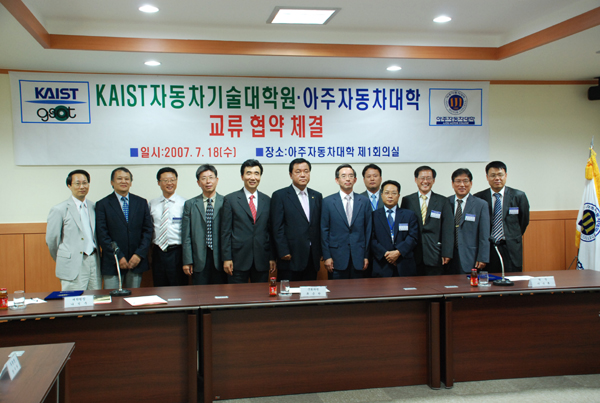 Cooperation Agreement with Ajou Motor College
Cooperation Agreement with Ajou Motor College
KAIST Graduate School of Automobile Technology to sign a cooperation agreement with Ajou Motor College
KAIST Graduate School of Automobile Technology (GSAT) signed a cooperation agreement with Ajou Motor College (AMC) on July 18th.
Under the agreement, the both schools will share education and research facilities and promote mutual cooperation for joint education and researches.
Lawmaker Geun-Chan Ryu, KAIST Vice President of Budget & Planning Ji-Won Yang, GSAT Dean Suck-Joo Na, AMC Dean Soo-Hoon Lee, etc. attended the ceremony.
2007.07.24 View 18070
Cooperation Agreement with Ajou Motor College
Cooperation Agreement with Ajou Motor College
KAIST Graduate School of Automobile Technology to sign a cooperation agreement with Ajou Motor College
KAIST Graduate School of Automobile Technology (GSAT) signed a cooperation agreement with Ajou Motor College (AMC) on July 18th.
Under the agreement, the both schools will share education and research facilities and promote mutual cooperation for joint education and researches.
Lawmaker Geun-Chan Ryu, KAIST Vice President of Budget & Planning Ji-Won Yang, GSAT Dean Suck-Joo Na, AMC Dean Soo-Hoon Lee, etc. attended the ceremony.
2007.07.24 View 18070 -
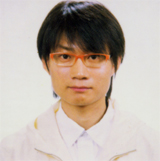 Ki-Won Lee Receives Best Student Paper Award
Ki-Won Lee Receives Best Student Paper Award
Ki-Won Lee, a doctoral student of Materials Science & Engineering, has received the Best Student Paper Award ‘Motorola Fellowship Award’ at 2007 Electronic Components and Technology Conference (ECTC).
Lee’s paper is about a new bonding process of anisotropic conductive film using ultrasonic wave, which applies ultrasonic wave, instead of thermal compression, at the room temperature to reduce the process time from ten to three seconds.
The recipients of Motorola Fellowship Award are selected by IEEE Components, Packaging and Manufacturing Technology Society, and Motorola awards special scholarship to recipients. The ECTC is the world’s largest yearly conference concerning electronic packaging technologies with more than 1,000 attendees and more than 300 presented papers.
2007.07.02 View 21244
Ki-Won Lee Receives Best Student Paper Award
Ki-Won Lee Receives Best Student Paper Award
Ki-Won Lee, a doctoral student of Materials Science & Engineering, has received the Best Student Paper Award ‘Motorola Fellowship Award’ at 2007 Electronic Components and Technology Conference (ECTC).
Lee’s paper is about a new bonding process of anisotropic conductive film using ultrasonic wave, which applies ultrasonic wave, instead of thermal compression, at the room temperature to reduce the process time from ten to three seconds.
The recipients of Motorola Fellowship Award are selected by IEEE Components, Packaging and Manufacturing Technology Society, and Motorola awards special scholarship to recipients. The ECTC is the world’s largest yearly conference concerning electronic packaging technologies with more than 1,000 attendees and more than 300 presented papers.
2007.07.02 View 21244 -
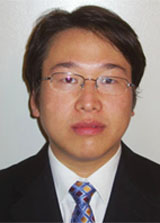 KAIST Graduate Selected As Winner of IEEE Outstanding Young Engineer Award
- First Korean winner of IEEE Outstanding Young Engineer Award
Dr. Myung-Jin Rhim, Bachelor, Master, and Ph.D of KAIST, has been selected to receive 2007 Outstanding Young Engineer Award by the Institute of Electrical and Electronics Engineers (IEEE) Components, Packaging, and Manufacturing Technology (CPMT) Society. Dr. Rhim will be the first Korean winner of the award.
Dr. Rhim received his Ph.D of Materials Science & Engineering at KAIST in 2001 and has made outstanding research outputs, such as 28 papers at international journals covered by Science Citation Index (SCI) and 12 international patents. He has been also listed in Marquis Who’s Who in the World, Who’s Who of Emerging Leaders, Who’s Who in Asia, and Outstanding Intellectual of the 21st Century, 21st Century Award for Achievement published by the International Biographical Centre of Cambridge, England.
IEEE CPMT Society has yearly awarded the Outstanding Young Engineer Award to a scientist or engineer of electronic components, packaging, and manufacturing technology prior to his or her 35th birthday in recognition of his or her research achievements. Dr. Rhim is now in his postdoctoral program at Georgia Institute of Technology in USA.
2007.06.14 View 20319
KAIST Graduate Selected As Winner of IEEE Outstanding Young Engineer Award
- First Korean winner of IEEE Outstanding Young Engineer Award
Dr. Myung-Jin Rhim, Bachelor, Master, and Ph.D of KAIST, has been selected to receive 2007 Outstanding Young Engineer Award by the Institute of Electrical and Electronics Engineers (IEEE) Components, Packaging, and Manufacturing Technology (CPMT) Society. Dr. Rhim will be the first Korean winner of the award.
Dr. Rhim received his Ph.D of Materials Science & Engineering at KAIST in 2001 and has made outstanding research outputs, such as 28 papers at international journals covered by Science Citation Index (SCI) and 12 international patents. He has been also listed in Marquis Who’s Who in the World, Who’s Who of Emerging Leaders, Who’s Who in Asia, and Outstanding Intellectual of the 21st Century, 21st Century Award for Achievement published by the International Biographical Centre of Cambridge, England.
IEEE CPMT Society has yearly awarded the Outstanding Young Engineer Award to a scientist or engineer of electronic components, packaging, and manufacturing technology prior to his or her 35th birthday in recognition of his or her research achievements. Dr. Rhim is now in his postdoctoral program at Georgia Institute of Technology in USA.
2007.06.14 View 20319 -
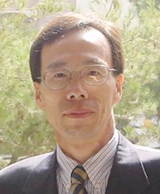 Professor Yang Named Recipient of Dupont Science & Technology Award
Professor Yang Named Recipient of Dupont Science & Technology Award
- Named as the recipient of Dupont Science & Technology Award of 2007- In recognition of his development of optical?bio-functional photonic crystal structures through Self-assembly of nanoparticles
Seung-Man Yang, a professor of Chemical and Biomolecular Engineering of KAIST (President Nam Pyo Suh) and the president of the National Creative Research Initiatives Center for Photon and Fluid Integrated Circuit by the Ministry of Science and Technology, has been named as the recipient of Dupont Science & Technology Award.
Dupont Korea, associate of Dupont, a world-class science firm, has established and conferred ‘Dupont Science & Technology Award’ since 2002 to promote basic sciences and industrial development of Korea. Dupont Science & Technology Awards are awarded to scientists of universities or state-run institutes who have made outstanding R&D achievements in the fields of Chemistry, Chemical Engineering, Material Science and Material Engineering within five years. Dupont Korea announced on May 2, 2007 that Professor Yang is the recipient of the award this year, following the strict examination by the Koran Academy of Science and Technology (KAST).
The reason for the award is Professor Yang’s development of prototype optical?bio-functional photonic crystal structures that can process a huge amount of data, resulting from a study that has discovered the principle of Self-assembly where multifunctional nanoparticles are manufactured and assembled for themselves.
Professor Yang’s recent research result about photon structures and nano patterns was published by Nature (February 2, 2006 edition); posted on Heart-Cut, the portal site of the American Chemistry Society (ACS), as highlight paper two times (November 4, 2002 and May 1, 2006); and introduced at Research/Researcher of MRS Bulletin by the U.S. Material Research Society (MRS) as main paper in December 2003. Professor Yang is very famous in Korea and abroad for the excellences of his research achievements and has made request seminars at Harvard University, University of Wisconsin, Caltech, University of California, etc. He is also invited speaker and session organizer of the MRS and the SPIE.
2007.05.08 View 23423
Professor Yang Named Recipient of Dupont Science & Technology Award
Professor Yang Named Recipient of Dupont Science & Technology Award
- Named as the recipient of Dupont Science & Technology Award of 2007- In recognition of his development of optical?bio-functional photonic crystal structures through Self-assembly of nanoparticles
Seung-Man Yang, a professor of Chemical and Biomolecular Engineering of KAIST (President Nam Pyo Suh) and the president of the National Creative Research Initiatives Center for Photon and Fluid Integrated Circuit by the Ministry of Science and Technology, has been named as the recipient of Dupont Science & Technology Award.
Dupont Korea, associate of Dupont, a world-class science firm, has established and conferred ‘Dupont Science & Technology Award’ since 2002 to promote basic sciences and industrial development of Korea. Dupont Science & Technology Awards are awarded to scientists of universities or state-run institutes who have made outstanding R&D achievements in the fields of Chemistry, Chemical Engineering, Material Science and Material Engineering within five years. Dupont Korea announced on May 2, 2007 that Professor Yang is the recipient of the award this year, following the strict examination by the Koran Academy of Science and Technology (KAST).
The reason for the award is Professor Yang’s development of prototype optical?bio-functional photonic crystal structures that can process a huge amount of data, resulting from a study that has discovered the principle of Self-assembly where multifunctional nanoparticles are manufactured and assembled for themselves.
Professor Yang’s recent research result about photon structures and nano patterns was published by Nature (February 2, 2006 edition); posted on Heart-Cut, the portal site of the American Chemistry Society (ACS), as highlight paper two times (November 4, 2002 and May 1, 2006); and introduced at Research/Researcher of MRS Bulletin by the U.S. Material Research Society (MRS) as main paper in December 2003. Professor Yang is very famous in Korea and abroad for the excellences of his research achievements and has made request seminars at Harvard University, University of Wisconsin, Caltech, University of California, etc. He is also invited speaker and session organizer of the MRS and the SPIE.
2007.05.08 View 23423 -
 KAIST Opens CFTS
- To research the prevention of the illegal production of security technologies
- Total 1.5 billion won of research expenses and 102 researchers to be invested for the next three years- Opening ceremony at the computer science building, KAIST on April 13 at 10 am
KAIST (President Nam-Pyo Suh) will open ‘the Center of Fusion Technology for Security (CFTS)’ under the auspices of the Korea Minting & Security Printing Corporation (KOMSCO, President Hae-Sung Lee) to undertake researches over the prevention of illegal reproduction of security technologies. The opening ceremony was held at the computer science building, KAIST on Friday, April 13.
Total .1.5 billion won of research expenses and 102 researchers will be invested in the center for the next three years.
Main research fields are ▲ advanced IT-based information concealment methods ▲ utilization of energy transfer luminescence in host guest nano-substances ▲ the utilization of quantum-dot, non-crystal carbon and piezoelectric elements ▲ development of radio frequency identification (RFID), optical, biological security element-applied technologies, etc.
“We’ll develop fusion technologies for security that can easily detect forgeries and alterations of security products by introducing advanced IT, optical, chemical engineering, and biological elements. The development of core technologies applied to security products will activate domestic security markets and enable the export of relevant technologies,” said General Research Director Heung-Kyu Lee, a professor of Computer Sciences.
2007.04.19 View 17818
KAIST Opens CFTS
- To research the prevention of the illegal production of security technologies
- Total 1.5 billion won of research expenses and 102 researchers to be invested for the next three years- Opening ceremony at the computer science building, KAIST on April 13 at 10 am
KAIST (President Nam-Pyo Suh) will open ‘the Center of Fusion Technology for Security (CFTS)’ under the auspices of the Korea Minting & Security Printing Corporation (KOMSCO, President Hae-Sung Lee) to undertake researches over the prevention of illegal reproduction of security technologies. The opening ceremony was held at the computer science building, KAIST on Friday, April 13.
Total .1.5 billion won of research expenses and 102 researchers will be invested in the center for the next three years.
Main research fields are ▲ advanced IT-based information concealment methods ▲ utilization of energy transfer luminescence in host guest nano-substances ▲ the utilization of quantum-dot, non-crystal carbon and piezoelectric elements ▲ development of radio frequency identification (RFID), optical, biological security element-applied technologies, etc.
“We’ll develop fusion technologies for security that can easily detect forgeries and alterations of security products by introducing advanced IT, optical, chemical engineering, and biological elements. The development of core technologies applied to security products will activate domestic security markets and enable the export of relevant technologies,” said General Research Director Heung-Kyu Lee, a professor of Computer Sciences.
2007.04.19 View 17818 -
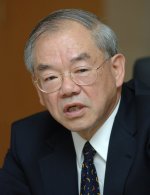 President Nam-Pyo Suh Receives Lifetime Achievement Award from SPE
President Nam-Pyo Suh has been selected as a recipient of the Lifetime Achievement Award by the Society of Plastic Engineers (SPE).
The SPE is the largest professional organization that promotes polymer-related R&D.
The SPE announced that it recognizes President Suh’s many contributions to the field of polymer processing. President Suh established the first university/industry cooperative research program at MIT known as the MIT-Industry Polymer Processing Program, which became a model in establishing similar programs at many other universities by NSF. Among the many new materials, products and manufacturing processes invented by him are: Microcellular plastics, known as MuCell and used commercially worldwide, USM high pressure foam molding technology, electrostatic charge-decay NDE technique for polymeric materials, and foam/straight plastic lamination process (a major industrial product).
2007.04.12 View 16958
President Nam-Pyo Suh Receives Lifetime Achievement Award from SPE
President Nam-Pyo Suh has been selected as a recipient of the Lifetime Achievement Award by the Society of Plastic Engineers (SPE).
The SPE is the largest professional organization that promotes polymer-related R&D.
The SPE announced that it recognizes President Suh’s many contributions to the field of polymer processing. President Suh established the first university/industry cooperative research program at MIT known as the MIT-Industry Polymer Processing Program, which became a model in establishing similar programs at many other universities by NSF. Among the many new materials, products and manufacturing processes invented by him are: Microcellular plastics, known as MuCell and used commercially worldwide, USM high pressure foam molding technology, electrostatic charge-decay NDE technique for polymeric materials, and foam/straight plastic lamination process (a major industrial product).
2007.04.12 View 16958